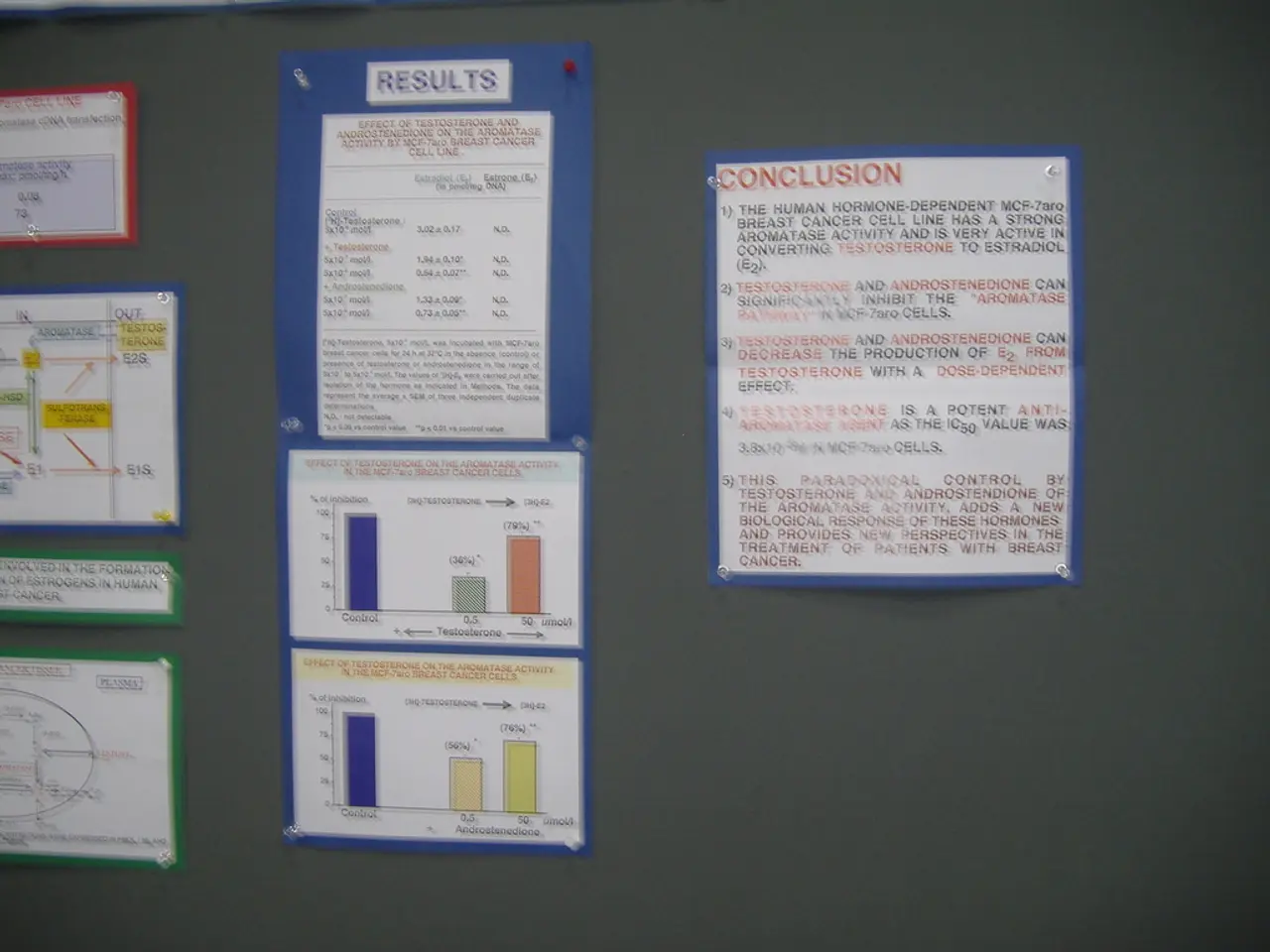Identifying Bipolar Disorder: A Guide
Bipolar disorder, unipolar depression, and Borderline Personality Disorder (BPD) are mental health conditions that share some similarities but have distinct differences. Understanding these distinctions is crucial for accurate diagnosis and effective treatment.
Bipolar Disorder vs. Unipolar Depression
Bipolar disorder, unlike unipolar depression, features alternating episodes of mania or hypomania (elevated or irritable mood with increased energy) and depression. Bipolar mood episodes last longer (days to months) and may include mixed episodes (simultaneous manic and depressive symptoms) and rapid cycling (four or more episodes per year). In contrast, unipolar depression involves recurring episodes of depression without any manic or hypomanic phases [1][5].
| Feature | Bipolar Disorder | Unipolar Depression | |--------------------------|------------------------------------------|-----------------------------------------| | Disorder Type | Mood disorder | Mood disorder | | Mood Episodes | Mania/hypomania + depression | Depression only | | Duration of Mood Swings | Days to months | Episodes of depression, variable length| | Mood Triggers | Often no clear external trigger | Can be related to life stressors | | Self-Image | Stable outside episodes | Stable | | Relationships | Not a defining feature | Not a defining feature | | Impulsivity | Possible during mania/depression | Less common | | Treatment Focus | Medications (mood stabilizers, antipsychotics) + therapy | Primarily antidepressant medications + therapy|
Bipolar Disorder vs. Borderline Personality Disorder (BPD)
Bipolar disorder is a mood disorder, with mood changes that last days to months and may occur without external triggers. In contrast, BPD is a personality disorder characterized by much more rapid mood shifts, often lasting hours to a few days, usually triggered by specific events, especially interpersonal stress. BPD includes unstable self-image, intense, unstable relationships, and pervasive impulsivity, which are generally not core features of bipolar disorder [2][4].
| Feature | Bipolar Disorder | Borderline Personality Disorder (BPD) | |--------------------------|------------------------------------------|---------------------------------------------------------| | Disorder Type | Mood disorder | Personality disorder | | Mood Episodes | Mania/hypomania + depression | Rapid mood changes (hours to days), triggered by events| | Duration of Mood Swings | Days to months | Hours to days | | Mood Triggers | Often no clear external trigger | Usually triggered by interpersonal or environmental events| | Self-Image | Stable outside episodes | Unstable, frequently changing | | Relationships | Not a defining feature | Intense and unstable, fear of abandonment | | Impulsivity | Possible during mania/depression | Common and chronic | | Treatment Focus | Medications (mood stabilizers, antipsychotics) + therapy | Mainly psychotherapy (DBT, CBT), some medications |
Key Differences
In summary, mania or hypomania episodes uniquely characterize bipolar disorder compared to unipolar depression, while rapid, event-triggered mood shifts and unstable self-image distinguish BPD from bipolar disorder [1][2].
Bipolar disorder has a multifactorial basis, with genetic, biological, and environmental factors contributing to its development. It can be easily confused with other mood disorders, such as unipolar depression and borderline personality disorder (BPD). In adulthood, untreated bipolar disorder can have more serious consequences, leading to longer and more severe episodes.
Recognizing the differences between the types of bipolar disorder is essential for achieving a proper diagnosis and effective treatment. Having a first-degree relative with bipolar disorder significantly increases the chances of developing the illness. Bipolar disorder is a mental illness characterized by extreme changes in mood, including episodes of mania or hypomania and depression.
[1] American Psychiatric Association. (2013). Diagnostic and Statistical Manual of Mental Disorders (5th ed.). Arlington, VA: American Psychiatric Publishing. [2] American Psychiatric Association. (2000). Diagnostic and Statistical Manual of Mental Disorders (4th ed., Text Revision). Washington, DC: American Psychiatric Publishing. [4] Linehan, M. M. (1993). Cognitive-behavioral treatment of borderline personality disorder. Guilford Press. [5] Goodwin, F. K., & Jamison, K. R. (2007). Manic-depressive illness: Bipolar disorders and recurrent depression. Oxford University Press.
- Psychology plays a significant role in understanding mental health conditions, such as Bipolar Disorder, Unipolar Depression, and Borderline Personality Disorder (BPD).
- Bipolar Disorder, unlike Unipolar Depression, is characterized by alternating episodes of mania or hypomania and depression.
- Mania or hypomania episodes can last for days to months in Bipolar Disorder, while Unipolar Depression involves recurring episodes of depression without any manic or hypomanic phases.
- Bipolar mood episodes may include mixed episodes (simultaneous manic and depressive symptoms) and rapid cycling (four or more episodes per year).
- In contrast, Unipolar Depression does not feature any manic or hypomanic phases.
- BPD is a personality disorder with much more rapid mood shifts than Bipolar Disorder, often lasting hours to a few days.
- BPD is often triggered by specific events, especially interpersonal stress, while Bipolar Disorder frequently has no clear external triggers.
- Individuals with BPD may exhibit an unstable self-image, intense, unstable relationships, and pervasive impulsivity, which are generally not core features of Bipolar Disorder.
- Bipolar Disorder has a multifactorial basis, with genetic, biological, and environmental factors contributing to its development.
- Untreated bipolar disorder in adulthood can have more serious consequences, leading to longer and more severe episodes.
- Recognizing the differences between the types of bipolar disorder is essential for achieving a proper diagnosis and effective treatment.
- Having a first-degree relative with bipolar disorder significantly increases the chances of developing the illness.
- Bipolar Disorder is a mental illness characterized by extreme changes in mood, including episodes of mania or hypomania and depression.
- Science continues to explore various therapies and treatments for mental health conditions, such as Cognitive Behavioral Therapy (CBT) and medications for BPD, and fitness and exercise, nutrition, and skin care for overall health and wellness.




